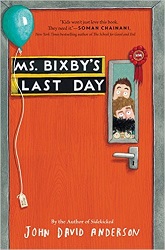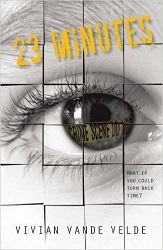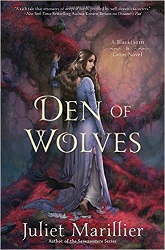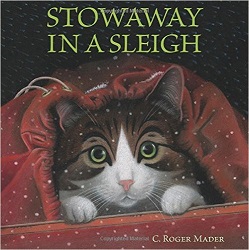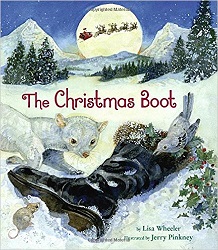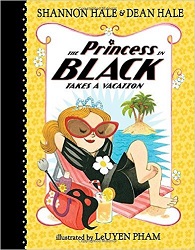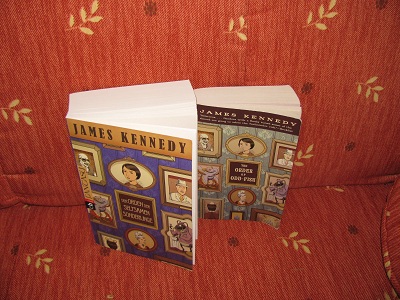Review of How to Bake Pi, by Eugenia Cheng
An Edible Exploration of the Mathematics of Mathematics
by Eugenia Cheng
Basic Books, 2015. 288 pages.
Starred Review
2016 Sonderbooks Stand-out: #5 Nonfiction
I have a Master’s in Math, so I love math books for a general audience. Besides, my math degree is very old by now, so a book like this taught me about a whole field of mathematics I hadn’t known about before. And it’s written by a woman!
She had me from the Prologue, where she debunks some math myths and begins with a recipe. Here are some parts I especially liked:
Cooking is about ways of putting ingredients together to make delicious food. Sometimes it’s more about the method than the ingredients, just as in the recipe for clotted cream, which only has one ingredient — the entire recipe is just a method. Math is about ways of putting ideas together to make exciting new ideas. And sometimes it’s more about the method than the “ingredients.”
Here’s about the myth that you have to be really clever to be a mathematician:
Much as I like the idea that I am very clever, the popular myth shows that people think math is hard. The little-understood truth is that the aim of math is to make things easier. Herein lies the problem — if you need to make things easier, it gives the impression that they were hard in the first place. Math is hard, but it makes hard things easier. In fact, since math is a hard thing, math also makes math easier.
Here’s talking about what it’s like to do research in math:
It’s true, you can’t just discover a new number. So what can we discover that’s new in math? In order to explain what this “new math” could possibly be about, I need to clear up some misunderstandings about what math is in the first place. Indeed, not only is math not just about numbers, but the branch of math I’m going to describe is actually not about numbers at all. It’s called Category Theory, and it can be thought of as the “mathematics of mathematics.” It’s about relationships, contexts, processes, principles, structures, cakes, custard.
Yes, even custard. Because mathematics is about drawing analogies, and I’m going to be drawing analogies with all sorts of things to explain how math works, including custard, cake, pie, pastry, donuts, bagels, mayonnaise, yogurt, lasagna, sushi.
True to her promise, she begins each chapter of her book with a recipe, and uses the recipe to illustrate the math about the recipe on the conceptual level.
Abstract Algebra was always one of my favorite fields of math, and Category Theory is a level of abstraction higher. What could be cooler than that?
But if the idea of extreme abstraction doesn’t get you as excited as it does me, think of it as math concepts explained through recipes. That conveys better how friendly this book makes the concepts.
She has analogies for almost everything. Here’s where she explains what abstraction is:
Abstraction is like preparing to cook something and putting away the equipment and ingredients that you don’t need for this recipe, so that your kitchen is less cluttered. It is the process of putting away the ideas you don’t need for the present purposes, so that your brain is less cluttered.
Here’s her explanation of proof by contradiction:
Imagine trying to “prove” that you really need to boil water to make tea. You would probably just try to make tea without boiling the water. You discover that it tastes disgusting (or has no taste at all) and conclude that yes, you do need to boil water to make tea. Or you might try to “prove” that you need gas to make your car go. You try running it on an empty tank and discover it doesn’t go anywhere. So yes, you do need gas to make your car go.
In math, this is called proof by contradiction — you do the opposite of what you’re trying to prove, and show that something would go horribly wrong in that case, so you conclude that you were right all along.
I think this book is truly beautiful. And I suspect it might provide glimmers to people who have never before seen beauty in math at all. If that’s not enough to appeal to potential readers, well, it has recipes.
Find this review on Sonderbooks at: www.sonderbooks.com/Nonfiction/how_to_bake_pi.html
Disclosure: I am an Amazon Affiliate, and will earn a small percentage if you order a book on Amazon after clicking through from my site.
Source: This review is based on a library book from Fairfax County Public Library.
Disclaimer: I am a professional librarian, but I maintain my website and blogs on my own time. The views expressed are solely my own, and in no way represent the official views of my employer or of any committee or group of which I am part.
What did you think of this book?

